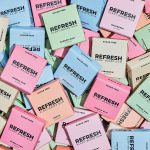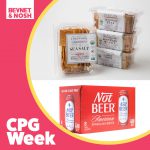Column: I’m Helping a Brand, Hopefully

Let me explain: As part of my involvement with a local community-based food business incubator, I have been asked to spend time mentoring a small beverage company, Boston Chai Party. Even better, the founders have been kind enough to allow me to write about what we’re doing along the way. So as part of this project, I’ll get a chance to affect change at a small beverage company, and report on it for BevNET.
The owners, Vishal and Rushil, are a delight: their mission is to bring bottles of a high-quality ready-to-drink Chai to every household in the country. They’re starting with the Boston area, where they live. They’ve got a 13.5 oz., Indian chai made with milk and real chai masala, or spice, that clocks in at about 160 calories — or 120 for their low sugar option — and an unsweetened black tea made with chai masala. I don’t have a supertater’s palate, but I’ve tried a lot of products: I think it’s good, with a gingery bite.
As a reporter and editor, I’m a bit different from most of the mentors who have been brought in to the program. They’ve all started and run food or beverage businesses, restaurants, funds — i.e. done things — while I’ve just written about those businesses. Aside from ride-alongs, I’ve never been on a sales call, and aside from plant tours, I’ve never run my own manufacturing. And I’ve never put as much of my own time or money at risk as my new friends, and for that I respect them immensely. They’re going to get from me as much of the experience and best practices and connections I’ve built after covering food and beverage for more than a dozen years.
We’ve got two overall missions, one academic and one professional: they have a presentation to their fellow program participants in June, and they’re simultaneously building a new RTD brand that they hope is scalable and effective. I’m here to help them with both goals. For this project, I will be reimbursed a total of zero dollars, which is a) more than I’m worth and b) full Karmic payback for years of making entrepreneurs and experts get on stage at our live events without paying them one red cent.
We have had a get-to-know-you conversation on the phone and that’s already offered me the chance to play sales consultant. Vishal, who was paying a visit to a local restaurant that he thought would like the product, called in from the road, and since I know the neighborhood well, I sent him to a few other stores as well that I know have been friendly to independent brands. Presto! Two more sales. I’m already worth what they’re paying me.
I’ve stressed to the guys that these first stores are as much of a laboratory to find out what works about the product as it is about sales. So they need to talk to the owners as much as possible, to find out what sells, what time of day, if there are repeat customers, if there are any comments from the buyers. I want them to be pests, to learn as much as possible about the way their product lives in the world.
From our conversations, we’ve identified key areas that we’ll work on as they build their brand. They’ve generously allowed me to write about our process as we go forward. I’ve identified these areas as questions that we need to answer.
Questions:
- Branding: How much do we leverage the Boston Chai Party idea? These guys, as I have told them, are likely the only people who can still get away with the idea of “Dressing Like Indians” for a revolutionary act, as they are, indeed, Indian. That, and the sweep of Chai as the Indian tea format could be compelling. But it could also be corny. I imagine that’s a fine line marketers walk all the time.
- Distribution: When are they distributor-ready? Our event speakers often suggest that brands develop some kind of retail track record before they approach retailers and distributors. That way, distributors know there isn’t as much of a risk in taking on the product, and that they have accounts already built in to target. But if you walk in too early, no one will want to give you the time of day. My advice so far has been to take existing meetings, but only insofar as you’re walking in with a learner’s mindset — it’s early enough in the game that it’s still exhibition season.
- Sales: How do we set up their price structure to allow them to begin working with distributors — and to allow them to eventually cross over into conventional channels? Right now, they are looking at specialty accounts. There’s a temptation for them to leapfrog Whole Foods and head right for other chains, but we are concerned that in our geography, Whole Foods has so much density it’s not something we can ignore. Still, there are plenty of sophisticated consumers here and it doesn’t have to be the only incubation channel: there’s Wegman’s, Roche Brothers, even Shaw’s that could set them up for success.
- Product: Is the world ready for a $4-$5 per bottle, cold, ready-to-drink chai? Will consumers start to use the heatable option and how much do we drive them there? At 160 calories per bottle, do we increase the sugar count a bit to improve flavor, or decrease it to get it below 100 calories and risk losing consumer training wheels?
- Label: What’s the key word or hook? Masala is the one I’m struggling with. Yes, it means “spice” – a key denotative piece for the founders. But if everyone knew that, calling it Masala Chai would be the best option, but it’s my hunch that they don’t, which would make calling it “Masala Spice Chai” the best way to triangulate with the consumer. Do we measure for that online?
In my career as a journalist, I’ve made the strongest attempts possible to be objective in my stories. In this situation, objectivity is out the window, however. The Boston Chai Party will roll on. If you have suggestions for them as we go forward, or are interested in trying the product, let me — let US — know and we’ll do our best to get it in your hands.














